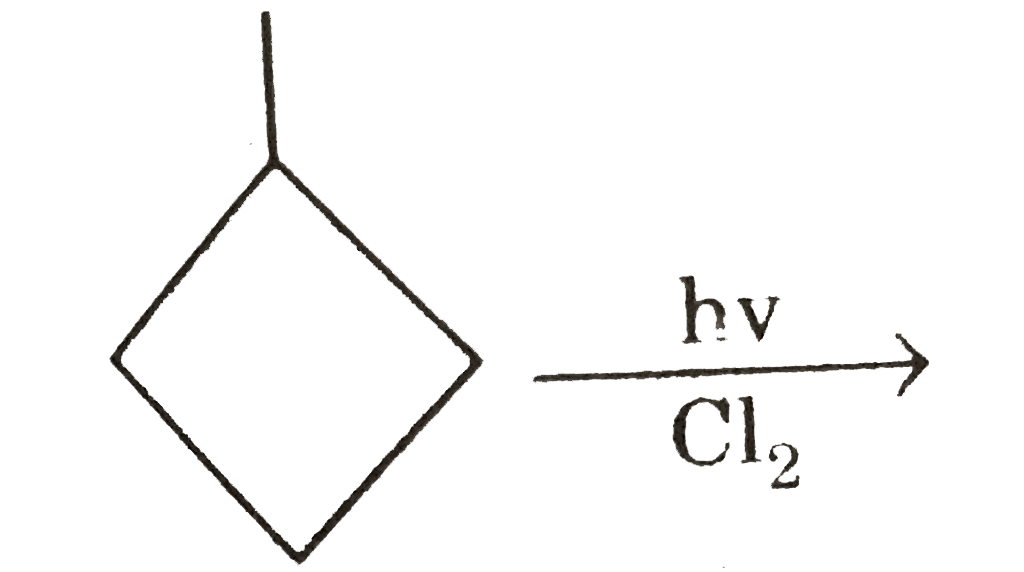? Δ,CN−−−−−−−−−→ETOH2H2O Benzoin.
The reactant is obtained by dry distillation of the calcium salts of the following pairs –
C6H5CH2COOH,HCOOH
C6H5COOH, HCOOH
C6H4 (OH)COOH, HCOOH
C6H4(NH2)COOH, HCOOH
The correct Answer is:B
To solve the question regarding the reactant obtained from the dry distillation of calcium salts that leads to the formation of benzoin, we will follow these steps:
1. Understand the Reaction: The question involves the reaction of a compound with cyanide ion (CN⁻) and ethanol-water mixture (EtOH/H₂O) to yield benzoin. This reaction is known as benzoin condensation.
2. Identify the Reactant: In benzoin condensation, the reactants are typically aromatic aldehydes. The most common example is benzaldehyde (C₆H₅CHO).
3. Dry Distillation of Calcium Salts: The reactant (benzaldehyde) can be obtained from the dry distillation of calcium salts of specific carboxylic acids. We need to identify which pairs of carboxylic acids can yield benzaldehyde upon dry distillation.
4. Pairs of Carboxylic Acids:
- The first pair is C₆H₅CH₂COOH (benzoic acid) and HCOOH (formic acid).
- The second pair is C₆H₅COOH (benzoic acid) and HCOOH (formic acid).
5. Formation of Calcium Salts:
- For the first pair: The calcium salt would be C₆H₅CH₂COO⁻Ca²⁺ and HCOO⁻Ca²⁺.
- For the second pair: The calcium salt would be C₆H₅COO⁻Ca²⁺ and HCOO⁻Ca²⁺.
6. Dry Distillation Process: When these calcium salts are subjected to dry distillation, they decompose to form benzaldehyde (C₆H₅CHO) and calcium carbonate (CaCO₃) as a byproduct.
7. Conclusion: The correct pairs of carboxylic acids that can yield benzaldehyde upon dry distillation are:
- C₆H₅CH₂COOH (benzoic acid) and HCOOH (formic acid)
- C₆H₅COOH (benzoic acid) and HCOOH (formic acid)
Final Answer:
The reactant is obtained by dry distillation of the calcium salts of the pairs:
- C₆H₅CH₂COOH and HCOOH (or)
- C₆H₅COOH and HCOOH.
---
- The first pair is C₆H₅CH₂COOH (benzoic acid) and HCOOH (formic acid).
- The second pair is C₆H₅COOH (benzoic acid) and HCOOH (formic acid).
- For the first pair: The calcium salt would be C₆H₅CH₂COO⁻Ca²⁺ and HCOO⁻Ca²⁺.
- For the second pair: The calcium salt would be C₆H₅COO⁻Ca²⁺ and HCOO⁻Ca²⁺.
- C₆H₅CH₂COOH (benzoic acid) and HCOOH (formic acid)
- C₆H₅COOH (benzoic acid) and HCOOH (formic acid)
The reactant is obtained by dry distillation of the calcium salts of the pairs:
- C₆H₅CH₂COOH and HCOOH (or)
- C₆H₅COOH and HCOOH.
Topper's Solved these Questions
- BOOK - MOTIONCHAPTER - CARBONL COMPOUNDSEXERCISE - EXERCISE - 2 (LEVEL -I)46videos
CARBONL COMPOUNDS
- BOOK - MOTIONCHAPTER - CARBONL COMPOUNDSEXERCISE - EXERCISE -2 (LEVEL-II)18videos
CARBONL COMPOUNDS
- BOOK - MOTIONCHAPTER - CARBONL COMPOUNDSEXERCISE - EXERCISE - 4 LEVEL -II24videos
CARBONL COMPOUNDS
- BOOK - MOTIONCHAPTER - BIOMOLECULES & POLYMERSEXERCISE - EXERCISE - 4 (LEVEL II)17videos
BIOMOLECULES & POLYMERS
- BOOK - MOTIONCHAPTER - CARBOXYLIC ACIDEXERCISE - Exercise - 4 (LEVEL - 2 )22videos
CARBOXYLIC ACID
Similar Questions
Knowledge Check
- Question 1 - Select One
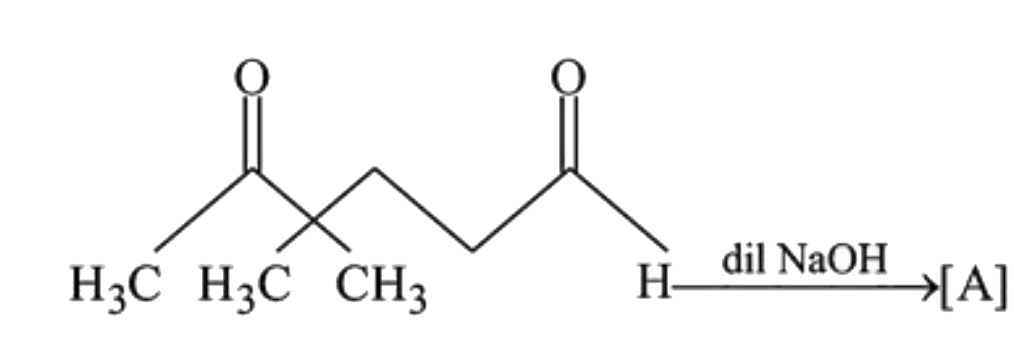 H2O+−−−→Δ[B]A
H2O+−−−→Δ[B]A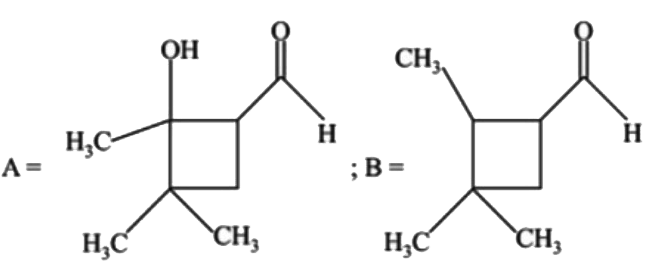 B
B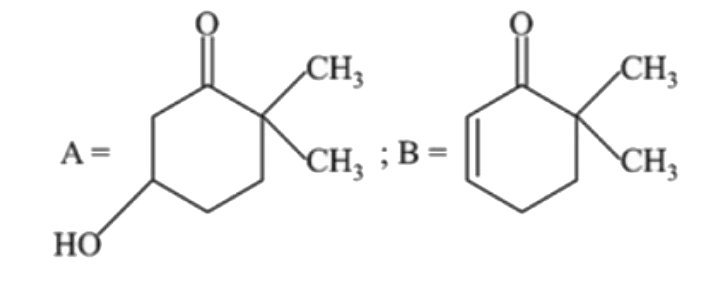 C
C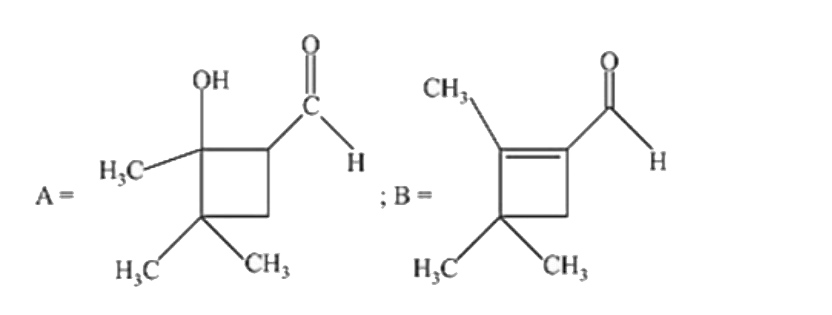 D
D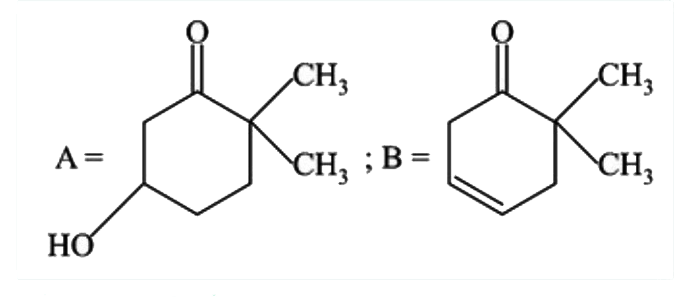
- Question 2 - Select One
During dry distillation of calcium salts of fatty acids,the following compound,as a side product is obtained
ANa2CO3BCaHCO3CCaCO3DNaHCO3 - Question 3 - Select One
AΔ−−−−−→800∘CCH2= C = O , Reactant ' A ' in the reaction is
ACH3CH2 CHOBCH3CHOCCH3−C∣∣O−CH3DC2H5OH
C6H5COClPd−BaSO4−−−−−−−−−→H2 Intermediate
Oxidation −−−−−−−→ IntermediateCa-Salt−−−−−−−−−→Dry distillation A
Compound (A) in above reaction sequence is –View Solution
NaBH4−−−−→(i)H2O+−−−−−−−→Δ A, A is .View SolutionCH3−CH2−CH3∣C∣CH3−CH∣OH−CD3H3PO4−−−→Δ Total no. of
alkenes (X)Fractional−−−−−→distilation No. of fractions obtained (Y).
X and Y are:View SolutionFeCr2O4+Na2CO3+O2Fusion−−−→[X]H+−−−−−→H2O[Y]H+−−−−−→H2O2[Z]
Which of the following statement is true for the compounds [X],[Y] and [Z] ?View SolutionComplete the following reactions,
(i) H2(g)+MnO(s)Δ−−→Mn(s)+H2O(g)
(ii) CO(g)+H2(g)Δ−−−−→Catalyst
(iii) C3H8(g)+3H2O(g)Δ−−−−→Catalyst
(iv) Zn(s)+NaOH(aq)Heat−−→
After completing the above reactions in the balanced equations the coefficient for H2(g) may beView Solution


